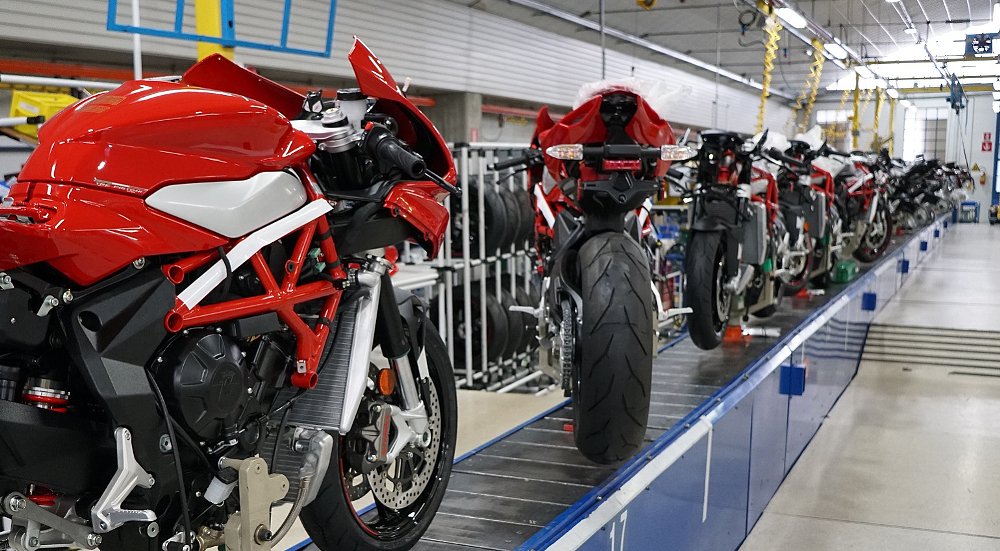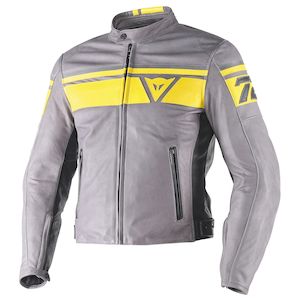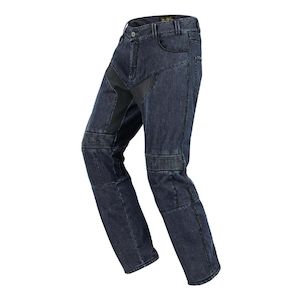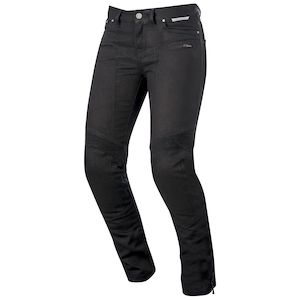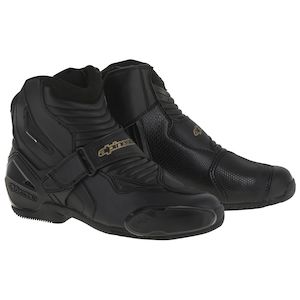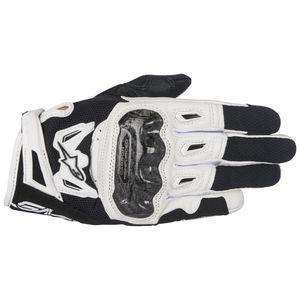A week after a short but intense introduction to the MV Agusta Turismo Veloce Lusso — one that focused on the “veloce” aspect — I returned to Varese with my wife and borrowed the bike again, to sample its “turismo” quotient in the Italian Lake District.
What a difference a week makes: Between my first and second rides on the Turismo Veloce Lusso, Mary and I explored Sicily on a KTM 1290 Super Adventure S. By comparison, the MV’s 33.5-inch seat was welcomed. So was a full wet weight well shy of 500 pounds.
On our own schedule, and without the pressure of keeping up with MV’s testers (and testosterone-crazed motorcycle journalists), my second ride was probably conducted at a pace that average buyers would find familiar.
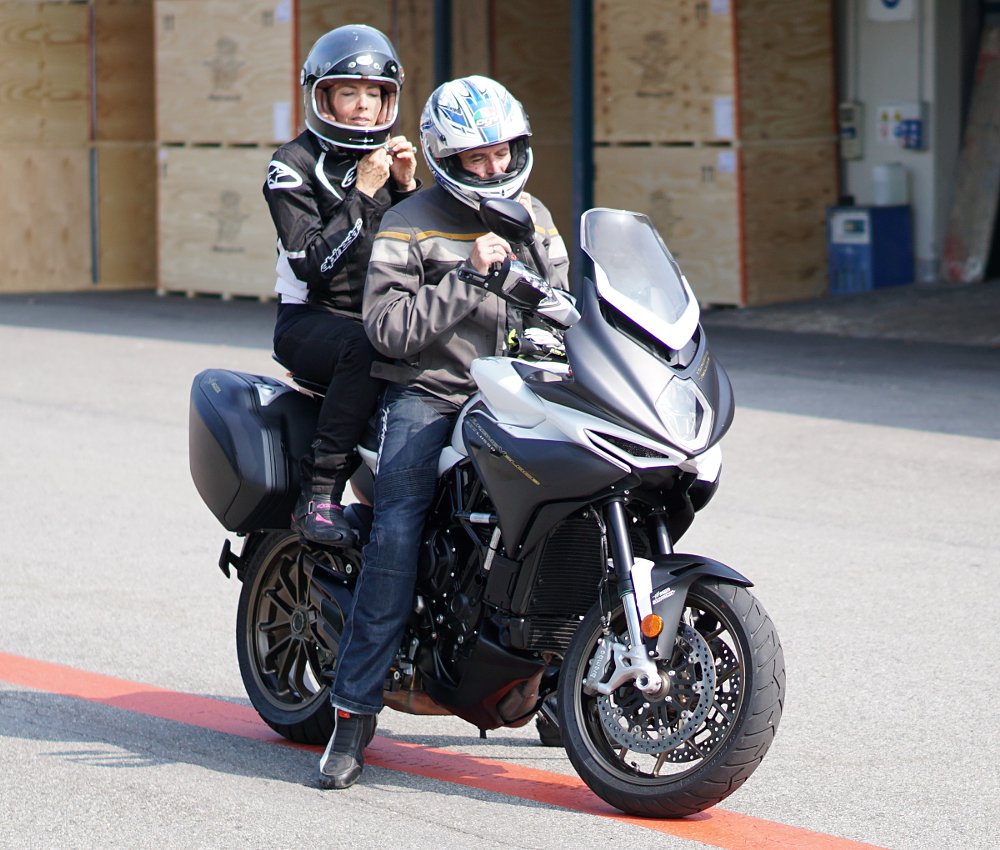
Testing the Turismo Veloce two-up
Both Mary and I, even in full gear with enough luggage to spend a night somewhere and go out for dinner in street clothes, barely total 300 pounds, so we certainly didn’t overload the suspension. Still, it allowed us to get a much more complete sense of the behavior of MV’s “fast luxury tourer” in its natural habitat.
The bike MV loaned us had the stock clutch. I was surprised how much I had to feather it, in order to pull away smoothly. I wonder if the Turismo Veloce Lusso has a tall first gear, or just has a slightly tall final drive ratio (considering that two people with luggage was part of the design brief). An easy and relatively affordable solution would be to fit a one-tooth smaller front sprocket… or spring for the Rekluse-equipped SCS version of the Turismo Veloce. I am quite sure I would not have noticed the issue at all if I’d been riding that version.
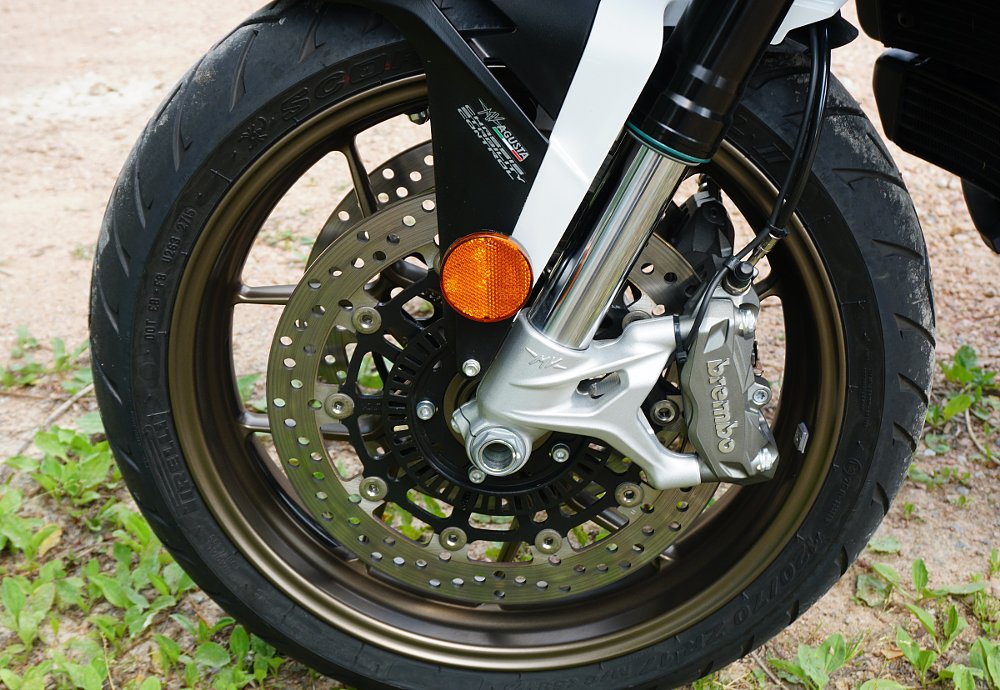
However, any complaints about the bike’s performance with an extra person on board completely vanished once we were underway. Chassis-wise, I can honestly say it was the first sport bike I’ve ever ridden that really felt completely neutral with a passenger. MV’s R&D chief, Brian Gillen, told me that the Touring ride mode sets both the suspension damping and engine map to minimize the helmet-knocking that characterizes so much two-up riding. It worked for us.
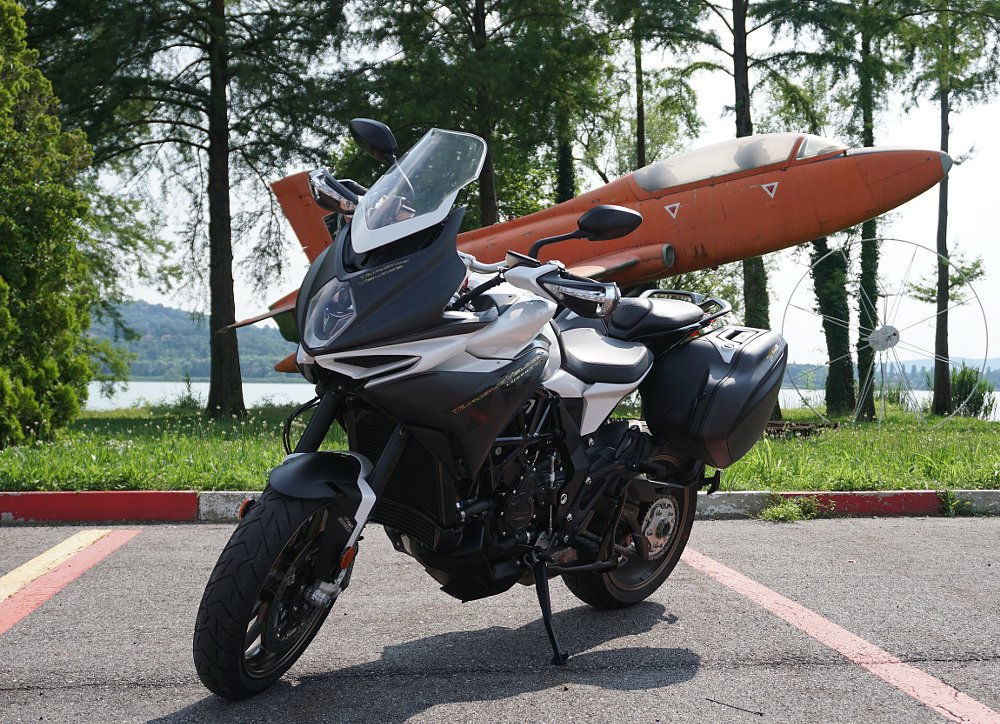
The engine pulls adequately from as low as 4,000 or 5,000 rpm, and it’s like a very powerful turbine above eight grand; there’s not a power peak, just a smooth wave of torque. In Touring mode, the rev limiter cuts in earlier and (at first) less obtrusively.
I’m not sure that I have ever specifically felt the reduced gyroscopic effect that characterizes the MV triple’s signature counter-rotating crankshaft, but the fairly wide and high handlebar provided excellent leverage and the bike certainly goes from side to side easily and predictably. Again, the steering was so neutral that I dropped my left hand off the ’bar from time to time, to squeeze Mary’s calf, just to reassure myself that she was still back there!
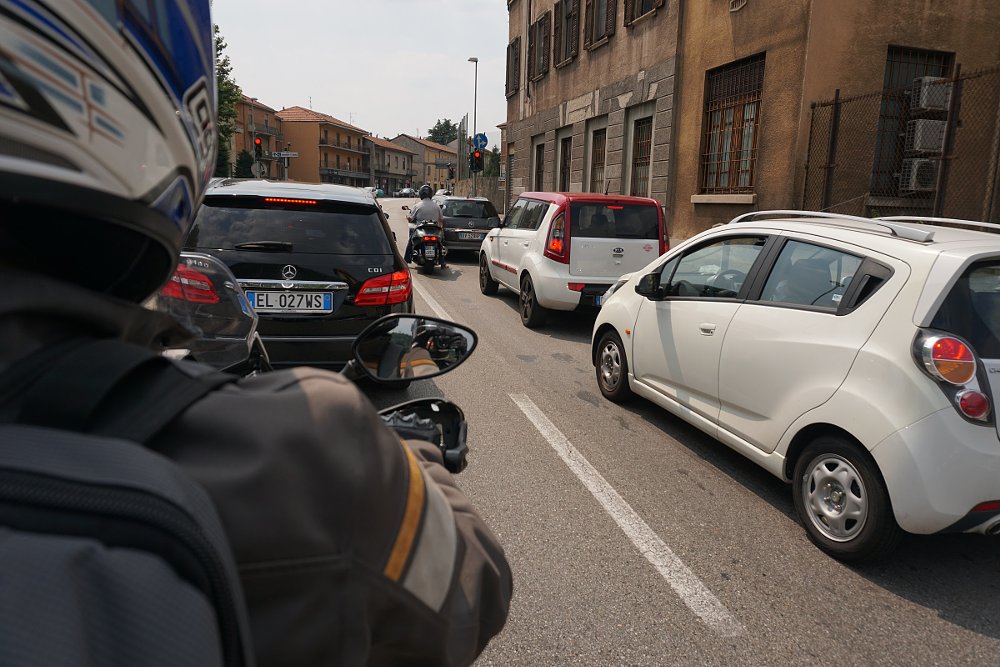
Unfortunately, the route I mapped out for our ride, north into Switzerland to explore the shores of Lake Lugano, then back into Italy for lunch in Como, was plagued by very heavy traffic. So, I wasn’t really able to enjoy the machine’s great handling on flowing sequences of curves. I frequently found myself kicking it down a gear or two, just by closing the throttle and double-tapping the shift lever, letting the EAS 2.0 system’s auto-blip function match revs, then rolling on the throttle and quick-shifting back up. Even two up, it gets from 30 mph to 90 fast enough to make passing easy (and Mary a little anxious!).
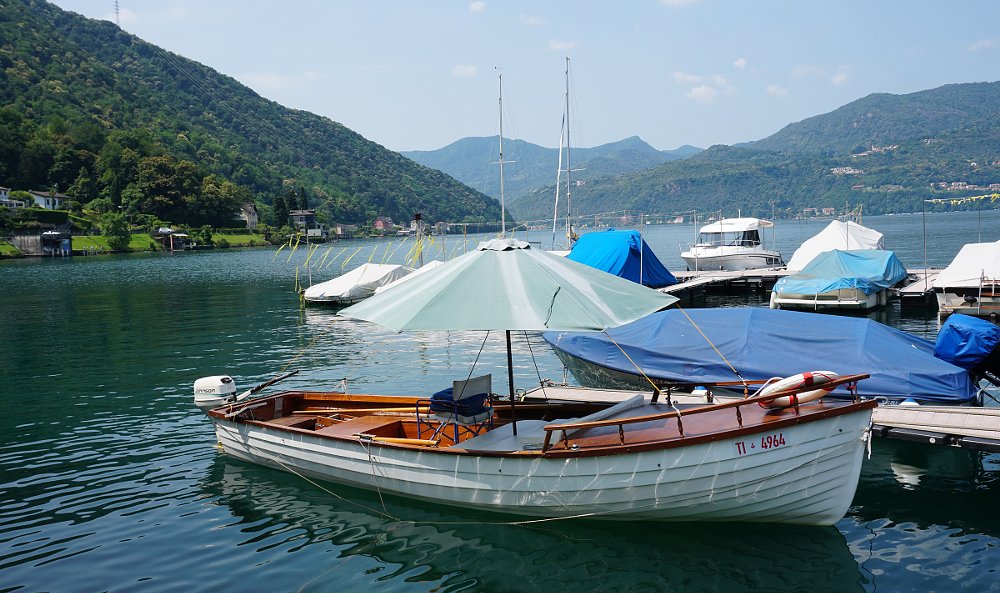
Speaking of family life, when I was a kid growing up in Switzerland, we visited Como on vacation. Back then, I was fascinated by the idea that Giacomo Agostini lived in that part of Lombardy and I desperately hoped to catch a glimpse of him. I didn’t, but Como was impossibly picturesque, even by European standards.
Unfortunately, that was about 45 years ago. The lake’s still beautiful and the medieval architecture’s still spectacular, but I wasn’t too happy after putting up with heavy traffic in a near-record heat wave, only to find a McDonald’s within the old city walls. Como did score a few points with me because while most cars are banned from the old part of the city, motorcycles are allowed in.
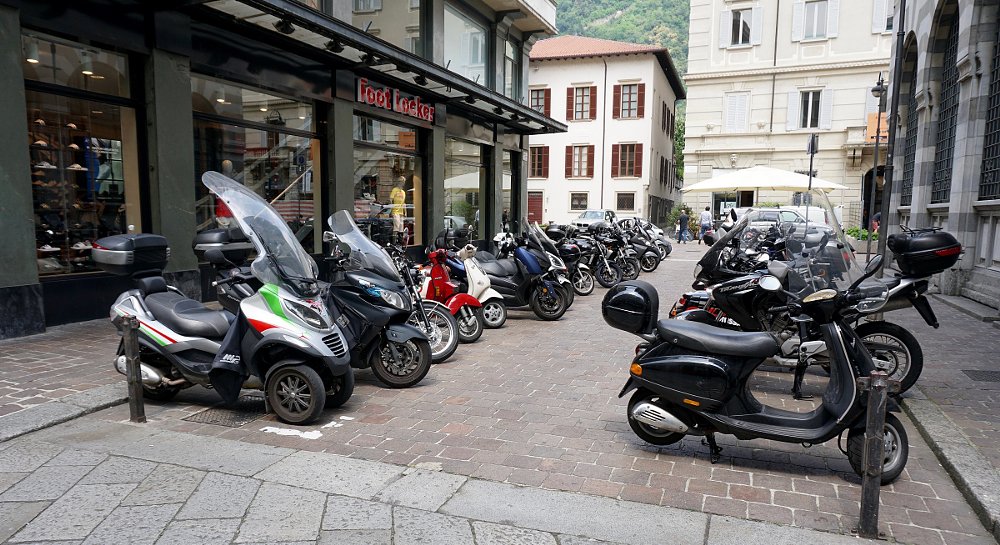
For what it’s worth, our hot ride on crowded roads proved, as I suspected, that the Turismo Veloce would make a terrific commuter.
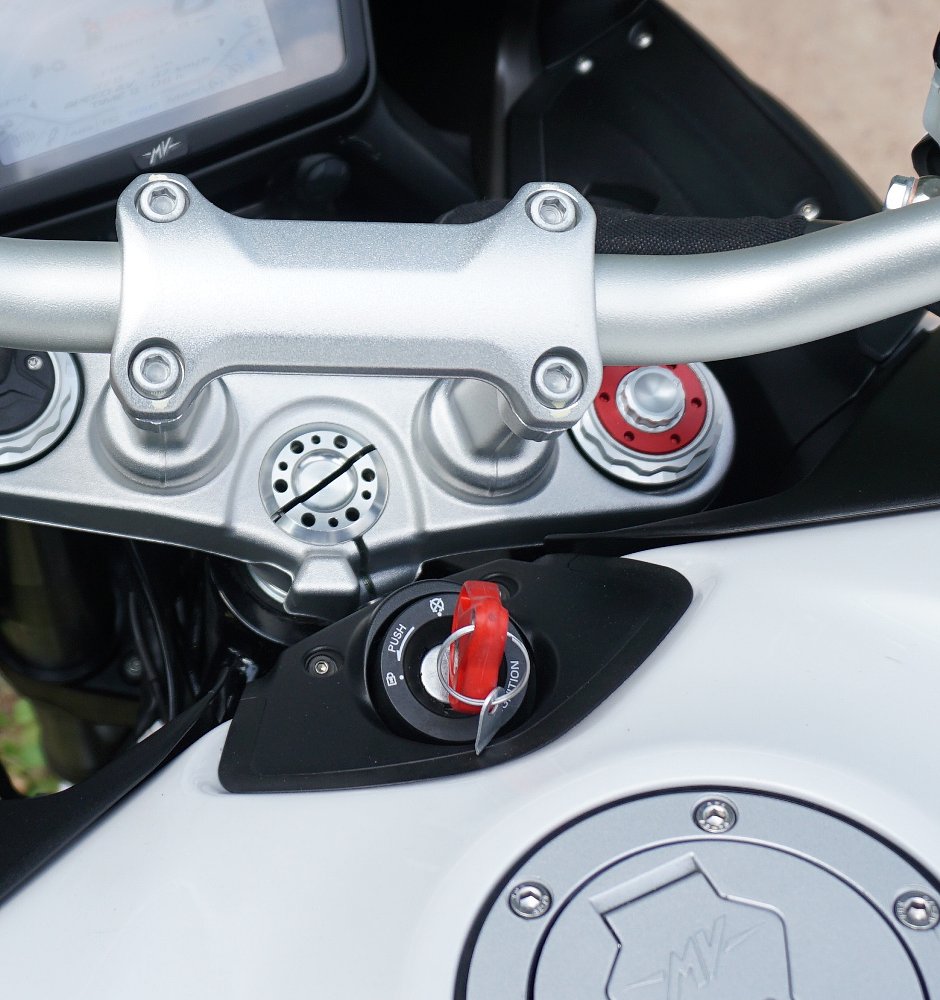
Since both of us have relatively small butts and I prefer to sit pretty far forward, there’s often a big gap between us when I carry Mary as a passenger. That means it’s not that easy for her to just hang on to me. The MV’s rear grab handles were far enough back that she could actually brace herself against them, instead of the usual useless ones, that are positioned just abeam of the passenger’s butt, where it’s impossible to use them to prevent pitching backwards under acceleration.
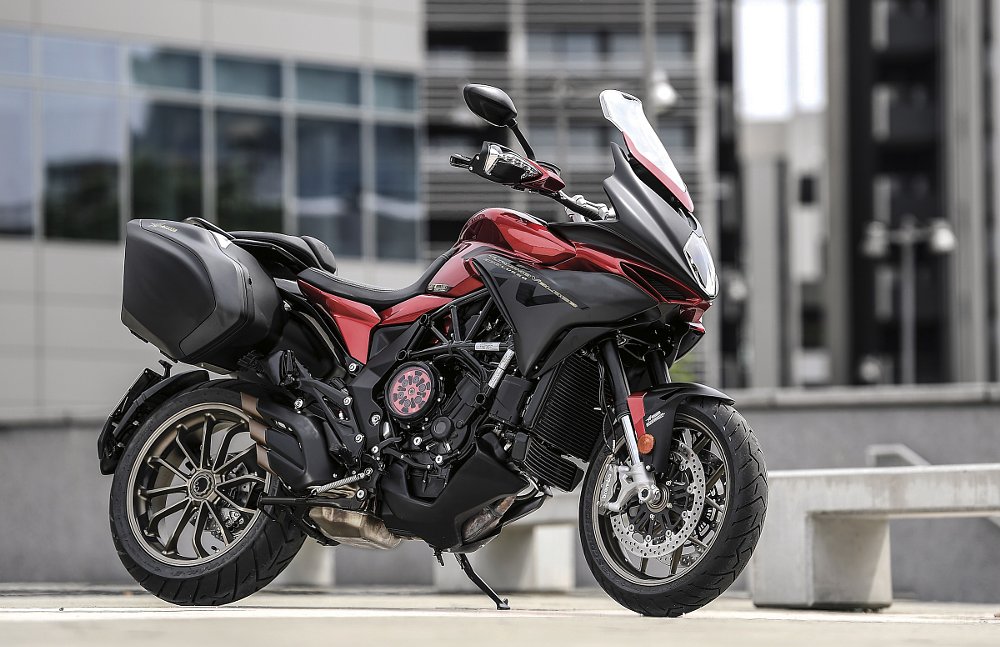
Mary commented on the notable lack of vibration felt through her seat and pegs. She told me that she occasionally felt a slight buzz through those grab handles, but that it was never bothersome. I felt some vibration, which I primarily noticed in my crotch and thighs, when the motor was under load at low revs. Not bothersome, but there. The mirrors were conspicuously vibration-free and definitely provided much better-than-average vision to the rear.
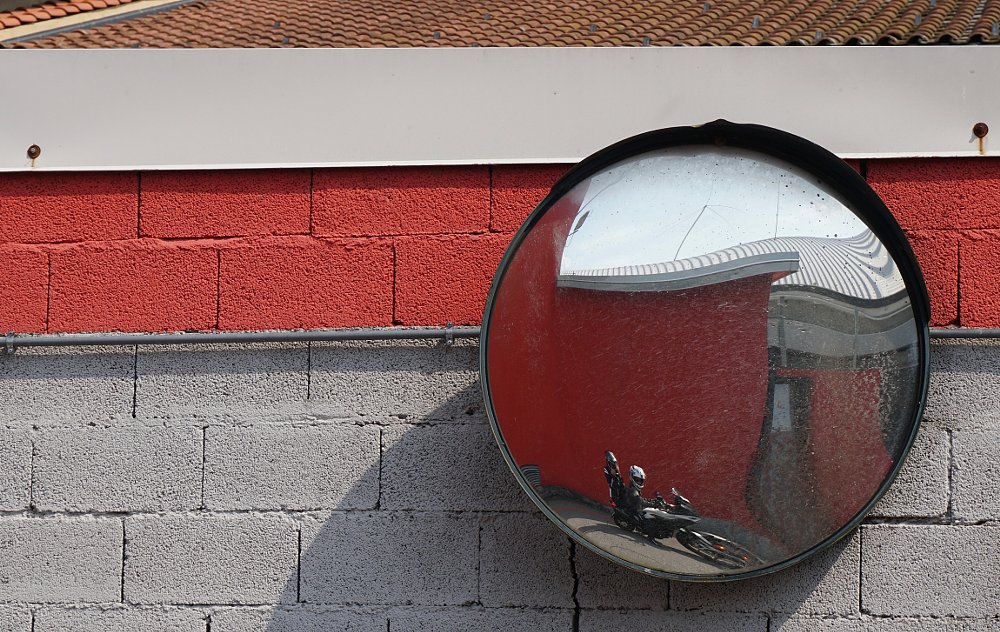
As far as touring amenities go, the 5.5-gallon fuel tank is not huge, but one of the side benefits of meeting the tough Euro-4 carbon emission standard is that the Turismo Veloce’s 798 cc motor gets impressive fuel mileage. I didn’t top it off to start, or refuel it before returning it, so I can’t tell you what mileage we got on our two-up ride, but I can say that both times I rode the bike — first solo at an aggressive pace and then two-up at a more sedate pace — the fuel gauge moved a lot slower than the motorcycle. I suspect even Lemmy would be hard pressed to drain the tank in less than 150 miles. Suffice to say that riders, and passengers, will want to get off and stretch their legs before the bike gets low on fuel, so gas stops will probably be welcomed before they’re needed.
The Turismo Veloce comes with a center stand that works reasonably well — obviously important on any chain-drive bike that might be used for serious mileage. During the launch, MV Agusta made a big deal of the fact that the bike’s low exhaust allowed them to design panniers without an exhaust tunnel. So, you can store a full-face helmet in either side, while the total width of the panniers is still less than that of the handlebar.
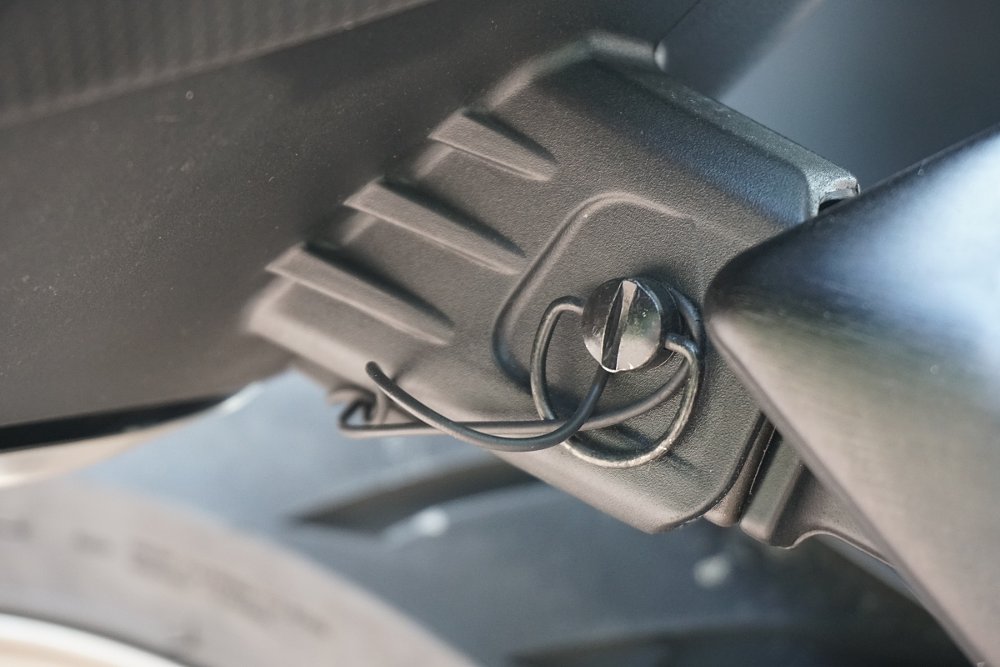
To remove the panniers, you pull a pin located fairly low down near the front of each case. I felt that the MV system was pretty intuitive which, if you’ll pardon the pun, is not always the case with panniers. They’re pretty light but, like most plastic cases, when they’re really full they can distort in ways that makes it hard to seal them. When the bike’s on the side stand, the left pin is not that easy to reach.
In terms of adding additional storage capacity, magnetic tank bags don’t work on the plastic fuel tank. Posters on an MV Agusta forum are happy with Givi’s Tanklock system. Brian Gillen told me that there is a project underway to create an accessory top case, which will inevitably spoil the bike’s lines, but will greatly increase its practicality as a continent-crossing sport-tourer.
I rode with the adjustable windscreen in the tallest position and never really felt any wind blast at all. In cooler weather, the handguards will provide welcome wind protection, too. That said, for a bike with the Turismo Veloce Lusso’s intended use (and MSRP), grip warmers would be nice.
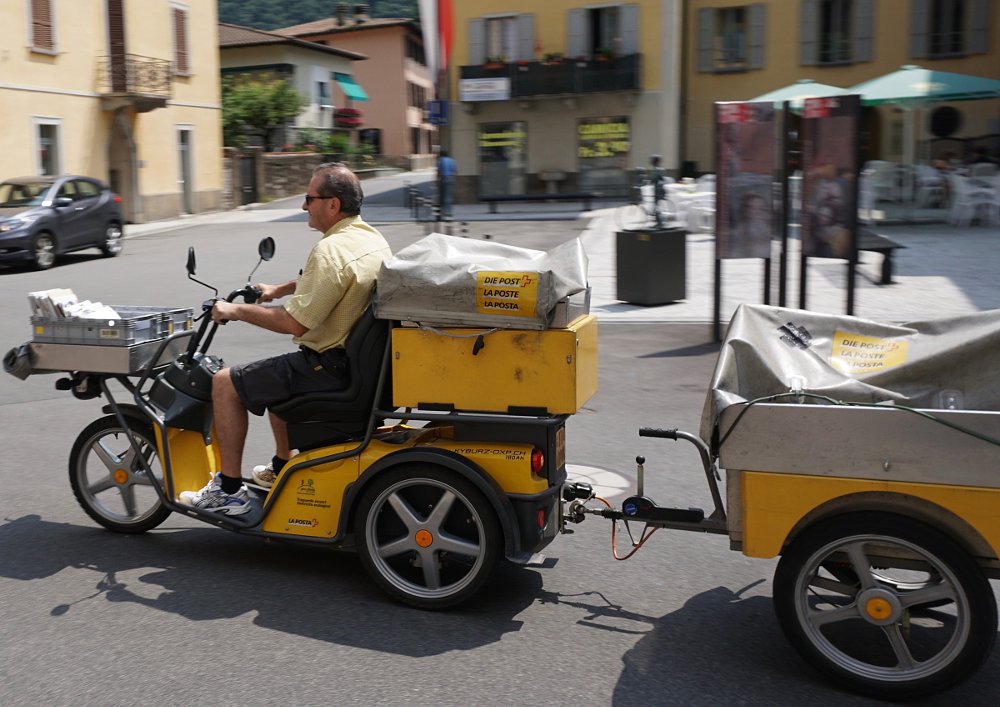
Most of our ride took place at ambient temperatures of around 90 degrees. When we slowed down for traffic or in towns, I felt some heat on my left leg. Mary didn’t notice anything; I suppose improved airflow at the back of the bike is a side benefit of the sparse rear end that Adrian Morton styled for this bike.
Twin USB ports provide accessory power. Users connect to the iPhone app via Bluetooth.
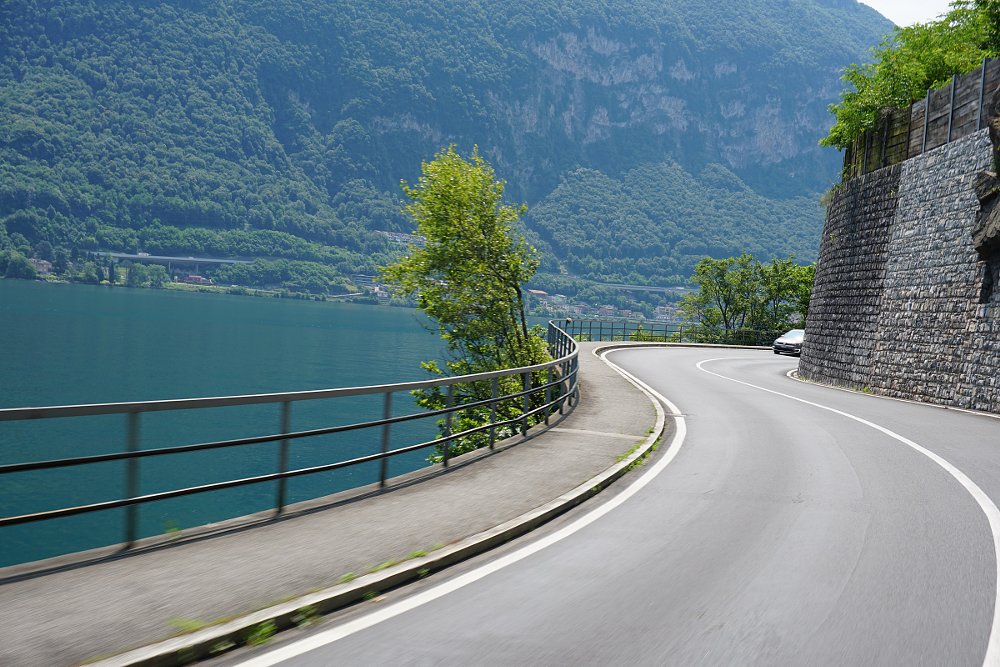
Conclusion: Positives, negatives and prices
At the end of our two-up day, the only significant negative factor for me as the rider was that I had to slip the clutch quite a bit to get us underway. This was especially noticeable on a couple of pretty steep uphill starts, but it was not something I felt riding solo a few days earlier. Mary had no complaints at all as passenger.
On the plus side, the two-up handling was a revelation and the motor (once underway) was easily capable of handling the extra load. I was again left with the impression that the Turismo Veloce Lusso is a confidence-inspiring and easy bike to ride well. Less-than-ideal surfaces — potholes, gravel, cobblestones, severe off-cambers — never caused any anxiety at all. The original equipment Pirelli Scorpion II Trail tires displayed similar aplomb. (I’ll have more about those tires when I write about our ride in Sicily, which was far longer and under much more varied conditions.)
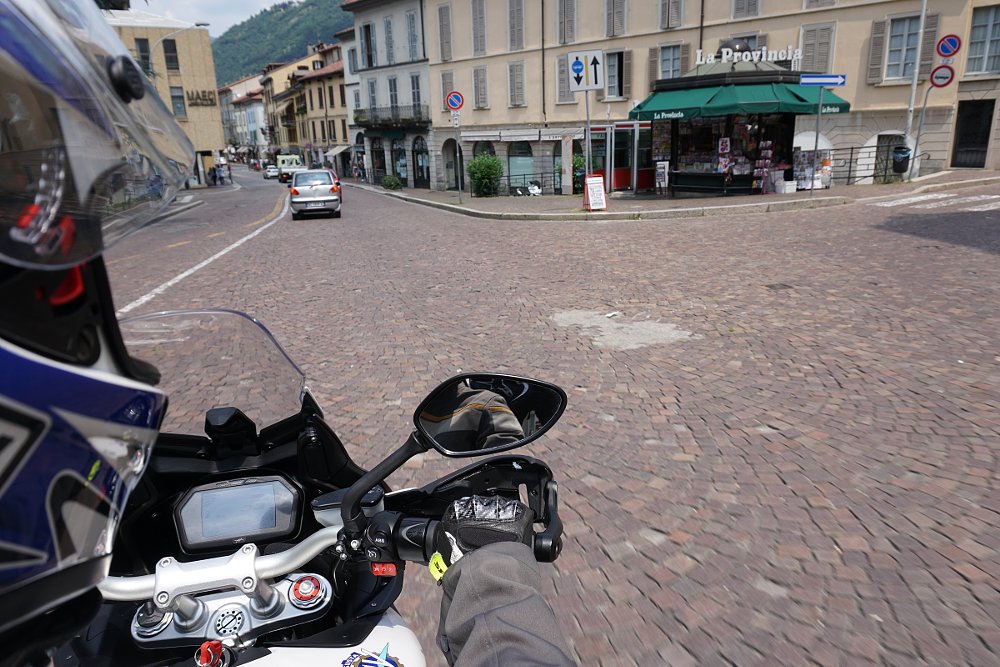
The riding position remained comfortable all day (although since it was Italy, after all, we made several short stops for espressos!). After a few hours, under riding conditions unsuitable for cruise control, I appreciated little touches like the Lusso’s relatively light throttle return spring.
Last, but not least, a note for the people who commented on my “first ride” report to the effect that, “The MV can’t do anything that my [insert Yamaha, Kawasaki, etc.] can’t do for thousands of dollars less.” I hear you, and I’m not saying I’d buy one myself even if I could afford it. People also commented to the effect that, “Just making fewer of them available doesn’t justify a premium price,” but that strategy worked perfectly for De Beers in the diamond business.
I have to admit it was a bit of an ego trip to see people react to the bike. A lot of people — more than usual — took an extra look, or smiled, or waved. We stopped for a quick coffee just before crossing into Switzerland, and four old Italian guys were plainly besotted by it (although my passenger certainly contributed to their jealousy!).
Is that extra cachet worth about $7,000 more than you’d pay for, say, a Yamaha Tracer GT? I suppose if you have to ask, this isn’t the bike for you.

 Membership
Membership









